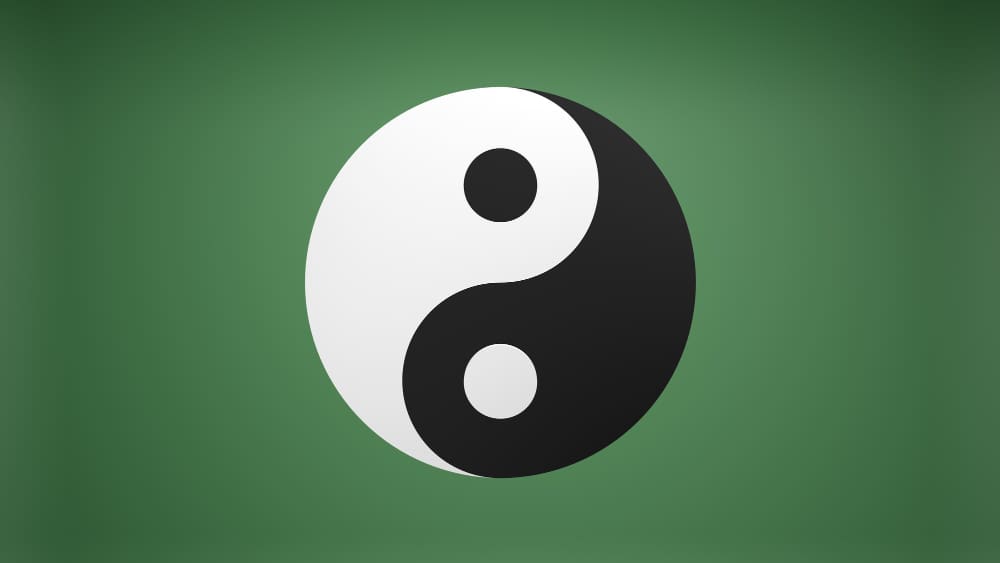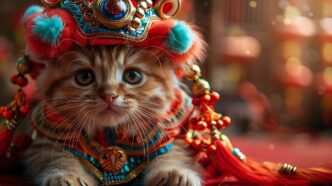The Chinese Zodiac is far more than a simple 12-year cycle of animal signs; it is a complex system of cosmology where every layer offers deeper self-understanding. For anyone seeking to grasp their true astrological nature, understanding the principle of Yin and Yang is essential. This ancient philosophy divides all phenomena, including the 12 zodiac animals, into one of two primal, complementary forces, assigning each sign a fixed polarity that fundamentally shapes its core energy, behavior, and how it interacts with the world, providing a critical key to unlocking a more nuanced and accurate personal reading.
What Are Yin and Yang?
At the heart of Chinese philosophy lies the concept of Yin (陰) and Yang (陽). These are not opposing forces in a battle of good versus evil, but rather complementary energies that interact to form a dynamic, balanced whole. Think of them as two sides of the same coin, where one cannot exist without the other.
The concept is most famously visualized in the Taijitu, the symbol of a circle divided into a black (Yin) and white (Yang) swirl. Within each swirl is a dot of the opposite color, signifying that within Yin there is a seed of Yang, and within Yang, a seed of Yin. This illustrates that nothing is ever purely one or the other.
Yang represents the active, assertive, and overt. It is associated with the sun, light, masculinity, expansion, heat, and outward expression. Yang energy is about doing, leading, and initiating action.
Yin, conversely, represents the passive, receptive, and hidden. It is linked to the moon, darkness, femininity, contraction, coolness, and introspection. Yin energy is about being, nurturing, and strategic planning.
The Zodiac’s Yin-Yang Pattern
Within the Chinese Zodiac, the 12 animal signs are arranged in a fixed, alternating sequence of Yang and Yin. The cycle begins with the first animal, the Rat, which is a Yang sign. The sequence then alternates for each subsequent animal.
This alternating polarity is a fundamental organizing principle of the zodiac. It ensures a natural rhythm and balance throughout the 12-year cycle. Knowing your animal’s inherent polarity is the first step to understanding your energetic blueprint.
The Yang Animals: Active & Assertive
The six Yang animals are the Rat, Tiger, Dragon, Horse, Monkey, and Dog. Individuals born under these signs tend to embody the active, expressive qualities of Yang energy. They are often characterized by their dynamism and a proactive approach to life.
These signs are natural go-getters, often sociable, and more comfortable taking the lead. They tend to be direct in their communication and prefer action over prolonged deliberation. Their energy is outward-focused, making them highly visible in their social and professional circles.
The Yin Animals: Receptive & Introspective
The six Yin animals are the Ox, Rabbit, Snake, Goat, Rooster, and Pig. People born under these signs typically reflect the receptive, thoughtful qualities of Yin energy. Their strength lies not in overt action but in strategy, intuition, and quiet influence.
These individuals are often more reserved, preferring to observe and plan before they act. They possess a deep inner world and are highly intuitive, often sensing the nuances of a situation that others might miss. Their power is subtle, working behind the scenes to support, guide, and perfect.
How Your Sign’s Polarity Shapes Your Personality
Your sign’s Yin or Yang nature acts as a lens through which its inherent traits are expressed. It doesn’t change the animal’s core characteristics but rather defines *how* those characteristics manifest.
Consider the powerful Tiger, a Yang sign. The Tiger is known for its bravery, confidence, and passion. Its Yang polarity amplifies these traits, turning the Tiger into a dynamic, commanding, and overtly competitive force. A Yang Tiger doesn’t just feel brave; it acts on that bravery with immediate and decisive action.
Now, look at the Snake, a Yin sign. The Snake is known for its wisdom, mystique, and determination. Its Yin polarity channels these traits inward. A Yin Snake doesn’t broadcast its intentions; it moves with quiet, calculated grace. Its wisdom is contemplative, and its determination is expressed through patience and precise timing rather than brute force.
This polarity influences every aspect of life. In a career setting, a Yang Dragon might thrive in a highly visible leadership role, inspiring teams with bold visions. A Yin Rabbit, equally capable, might excel in a role that requires diplomacy, strategic planning, and meticulous attention to detail, leading through consensus and careful guidance.
Yin and Yang in Relationships and Compatibility
The interplay of Yin and Yang is a cornerstone of relationship compatibility in Chinese astrology. While not the only factor, it provides a powerful framework for understanding the dynamic between two people. Generally, balance is the goal.
A Yang-Yang pairing, such as a Horse and a Dog, can be incredibly exciting and full of life. Both partners are active and adventurous, creating a relationship built on shared energy and enthusiasm. The potential challenge lies in power dynamics, as both may want to take the lead, requiring conscious effort to avoid clashes of will.
A Yin-Yin pairing, like a Goat and a Pig, often results in a deep, harmonious, and emotionally supportive bond. Both partners are intuitive and value peace and stability, creating a tranquil home life. The potential pitfall is a lack of initiative; they may need to push each other to step outside their comfort zones and take action on shared goals.
A Yin-Yang pairing, such as a Yang Rat and a Yin Ox, often creates a classic “opposites attract” dynamic that can be exceptionally balanced. The Rat brings excitement, social energy, and new ideas, while the Ox provides stability, patience, and the steady hand to bring those ideas to fruition. This complementary nature allows each partner to shine in their own way, filling in the gaps for the other.
Beyond the Animal: The Elemental Influence
To achieve an even more refined understanding, we must also consider the Five Elements: Wood, Fire, Earth, Metal, and Water. Each year in the 60-year calendar cycle is governed by both an animal and an element, and these elements also possess a Yin or Yang polarity.
This creates a third layer of nuance. For example, the Horse is inherently a Yang animal. However, there can be a Yang Wood Horse, a Yang Fire Horse, a Yang Earth Horse, and so on. The element’s polarity can either amplify or temper the animal’s base energy.
Take the inherently Yang Horse. The year of the Yang Fire Horse (e.g., 1966) produces individuals with double Yang energy. These people are exceptionally dynamic, passionate, and restless, embodying the Horse’s spirit in its most extreme form.
Now consider a Yin Water Rabbit. The Rabbit is an innate Yin sign, and Yin Water is the most receptive of all elemental forces. A person born in this combination is deeply intuitive, gentle, and adaptable, possessing a profound emotional depth and a quiet, flowing strength.
This elemental layer explains why two people born under the same animal sign can have such different personalities. The element modulates the core Yin or Yang energy, adding a unique signature to the individual’s astrological chart.
Ultimately, understanding your Chinese Zodiac sign’s Yin or Yang polarity is to understand your fundamental energetic current. It is the foundational rhythm that dictates whether you lead with bold action or with quiet strategy, whether your strength is overt or subtle. By embracing this core aspect of your astrological identity, you gain a powerful tool for self-awareness, helping you navigate your path and your relationships with greater balance and insight.








